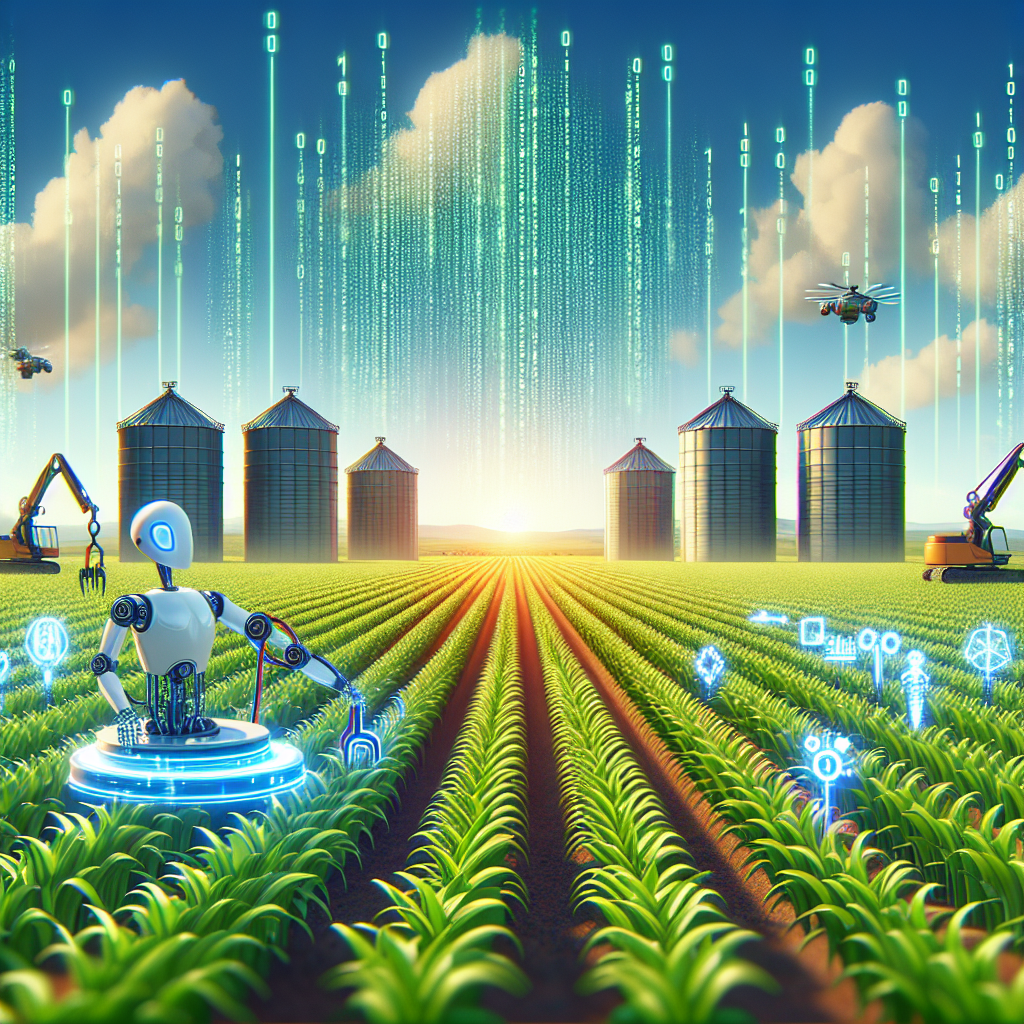In recent years, the agriculture industry has seen a significant transformation with the advent of AI-driven solutions. These technologies have revolutionized the way farmers operate, increasing efficiency, reducing costs, and improving crop yields. With the world’s population expected to reach 9.7 billion by 2050, the demand for food is only going to increase. AI-driven solutions have the potential to address the challenges facing the agriculture industry and ensure food security for the future.
AI-driven solutions in agriculture encompass a wide range of technologies, including machine learning, computer vision, and robotics. These technologies can be used to monitor crop health, optimize irrigation, predict pest outbreaks, and even automate harvesting. By analyzing data collected from sensors, drones, and satellites, AI algorithms can provide farmers with real-time insights into their crops, allowing them to make data-driven decisions and improve productivity.
One of the key benefits of AI-driven solutions in agriculture is their ability to increase efficiency. By automating time-consuming tasks such as monitoring crop health and predicting weather patterns, farmers can save time and resources. This allows them to focus on more important tasks, such as managing soil health and implementing sustainable farming practices. AI-driven solutions can also help farmers reduce costs by optimizing inputs such as water, fertilizer, and pesticides. By providing farmers with real-time insights into their crops, AI algorithms can help them make more informed decisions and reduce waste.
Another major benefit of AI-driven solutions in agriculture is their ability to improve crop yields. By analyzing data on soil health, weather patterns, and pest outbreaks, AI algorithms can help farmers optimize their farming practices and improve crop productivity. For example, by using computer vision to monitor crop health, farmers can identify early signs of disease or nutrient deficiencies and take corrective action before they impact yields. Similarly, by using machine learning to predict pest outbreaks, farmers can implement targeted interventions to protect their crops and maximize yields.
AI-driven solutions in agriculture also have the potential to improve sustainability. By optimizing inputs such as water, fertilizer, and pesticides, AI algorithms can help farmers reduce their environmental footprint and promote sustainable farming practices. For example, by using sensors to monitor soil moisture levels, farmers can optimize irrigation and reduce water waste. Similarly, by using drones to monitor crop health, farmers can reduce the need for chemical pesticides and promote natural pest control methods. By implementing AI-driven solutions, farmers can not only improve their bottom line but also contribute to a more sustainable future for agriculture.
Despite the many benefits of AI-driven solutions in agriculture, there are still some challenges that need to be addressed. One of the main challenges is the cost of implementing these technologies. While the cost of sensors, drones, and other hardware is decreasing, the initial investment can still be prohibitive for many farmers. Additionally, there is a lack of technical expertise in rural areas, which can make it difficult for farmers to adopt and implement AI-driven solutions. Finally, there are concerns about data privacy and security, as farmers may be hesitant to share sensitive information about their operations with third-party providers.
To address these challenges, governments, research institutions, and private companies are working to develop affordable and user-friendly AI-driven solutions for farmers. By providing training and technical support to farmers, these organizations can help them adopt and implement these technologies more effectively. Additionally, by promoting data standards and best practices, these organizations can help ensure that farmers’ data is secure and protected. Overall, the future of agriculture looks bright with the continued development and adoption of AI-driven solutions.
FAQs:
1. How do AI-driven solutions in agriculture work?
AI-driven solutions in agriculture use technologies such as machine learning, computer vision, and robotics to analyze data collected from sensors, drones, and satellites. By processing this data, AI algorithms can provide farmers with real-time insights into their crops, allowing them to make data-driven decisions and improve productivity.
2. What are the benefits of AI-driven solutions in agriculture?
AI-driven solutions in agriculture can increase efficiency, reduce costs, improve crop yields, and promote sustainability. By automating time-consuming tasks, optimizing inputs, and providing real-time insights, AI algorithms can help farmers make more informed decisions and improve their bottom line.
3. What are the challenges of implementing AI-driven solutions in agriculture?
Some of the main challenges of implementing AI-driven solutions in agriculture include the cost of hardware, the lack of technical expertise in rural areas, and concerns about data privacy and security. However, governments, research institutions, and private companies are working to address these challenges and develop affordable and user-friendly solutions for farmers.
4. How can farmers adopt and implement AI-driven solutions?
Farmers can adopt and implement AI-driven solutions by seeking training and technical support from governments, research institutions, and private companies. By working with these organizations, farmers can learn how to use these technologies effectively and maximize their benefits for their operations.

